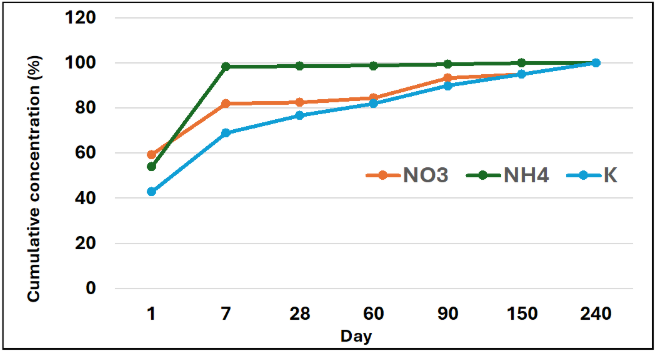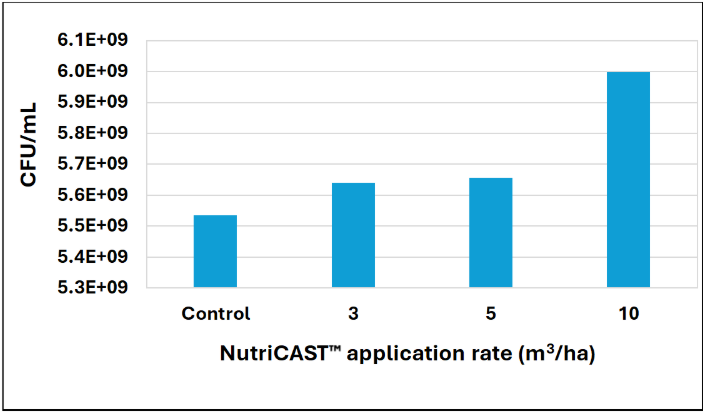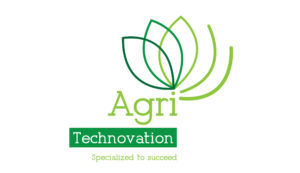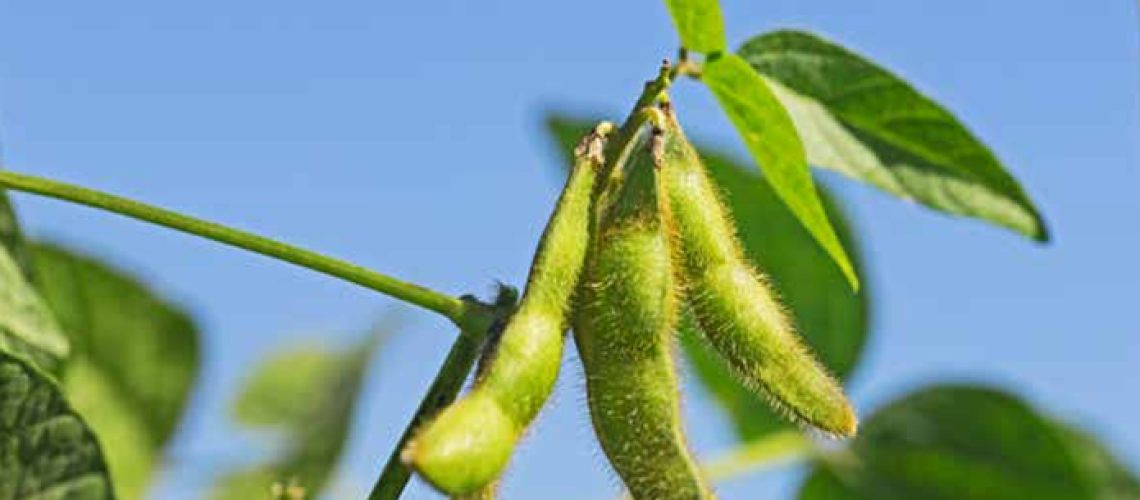Dr. Teunis Vahrmeijer, Director Business Development, Victus Bio
Dr. Stefan van Wyk, Head of Biological Research and Product Development, Victus Bio
NutriCAST™ for healthy soils
From the very birth of the concept Soil Health in 1909(1), it was recognised that soil fertility not only refers to the nutrient status of soils, but also includes the carbon content and abundance and diversity of organisms in the soil.
NutriCAST™ is registered as a Group 2 fertiliser and therefore regulated by the Fertilizers, Farm Feeds, Seeds and Remedies Act, Act 36 of 1947. NutriCAST™ consists of a mixture of composted animal manure and earthworm casts and its manufacturing is also regulated by the National Environmental Management Act, Act 107 of 1998.
Nutrient content
The nutrient content of NutriCAST™ is typically in the range of 1,8% for nitrogen, 1,3% for phosphorus and 2,5% for potassium. The release of nitrogen (NH₄ and NO₃) and potassium (K) from NutriCAST™ over time is presented in Figure 1.
The measured nutrient (N and K) fraction released is presented cumulatively as a percentage of the total element released at the end of 240 days. Although N is present in both the nitrate (NO₃) and ammonium (NH₄) form, the nitrate fraction represents approximately 1% of the total N in NutriCAST™ (data not shown). Nitrogen is mostly in the ammonium (NH₄) form, and nearly all of the ammonium is available for plant use within 28 days (Figure 1).
However, the form of N (ammonium or nitrate) depends on a number of processes that happen during the composting process, including mineralisation, nitrification and denitrification, which again depends on the local environmental conditions, e.g. temperature, pH, oxygen, water content and the type of organic material.³ On the other hand, 80% of the total K is plant available after 60 days, and the rest (20%) is slowly released over 180 days (Figure 1).

Figure 1: Nitrogen and potassium availability on NutriCAST™.2
Proven results
On the Highveld, good results were obtained when NutriCAST™ was broadcast at 3 m3/ha on soybean fields before planting, where, over a three-year period, an increase in the soil potassium and phosphor levels was observed.
In the Northern Cape region, NutriCAST™-treated wheat fields (2,7 m3/ha) consistently had higher yields (12,3%) than the control.
A synergistic relationship also exists between NutriCAST™ and beneficial soil organisms, as illustrated in Figure 2, where the number of rhizobia colony-forming units increased with the NutriCAST™ application rate. It is due to this effect that one of the proven fertiliser strategies for soybeans is to apply NutriCAST™ as a base fertiliser. Not only does this provide the soybean with the necessary plant nutrients, but it also increases the nodulation potential of the soybean plants.

Figure 2: Relationship between NutriCAST™ application and the number of colony-forming units (CFU) per millilitre (ml) of rhizobia.
NutriCAST™: Fertiliser Group 2 | Reg. number B5145 | Act 36 of 1947
References:
1. Brevik, E.C. 2019. A brief history of the soil concept. https://profile.soils.org/posts/field-and-historical-notes/a-brief-history-of-the-soil-health-concept.
2. Vahrmeijer, J.T., van Heerden, C and Tesfamarium, E. 2017. Nitrogen and potassium release from organic soil amendments over time. Report 1113. Citrus Research International.
3. Maeda K, Hanajima D, Toyoda S, Yoshida N, Morioka R, Osada T. 2011. Microbiology of nitrogen cycle in animal manure compost. Microbial Biotechnology, 700-709.





